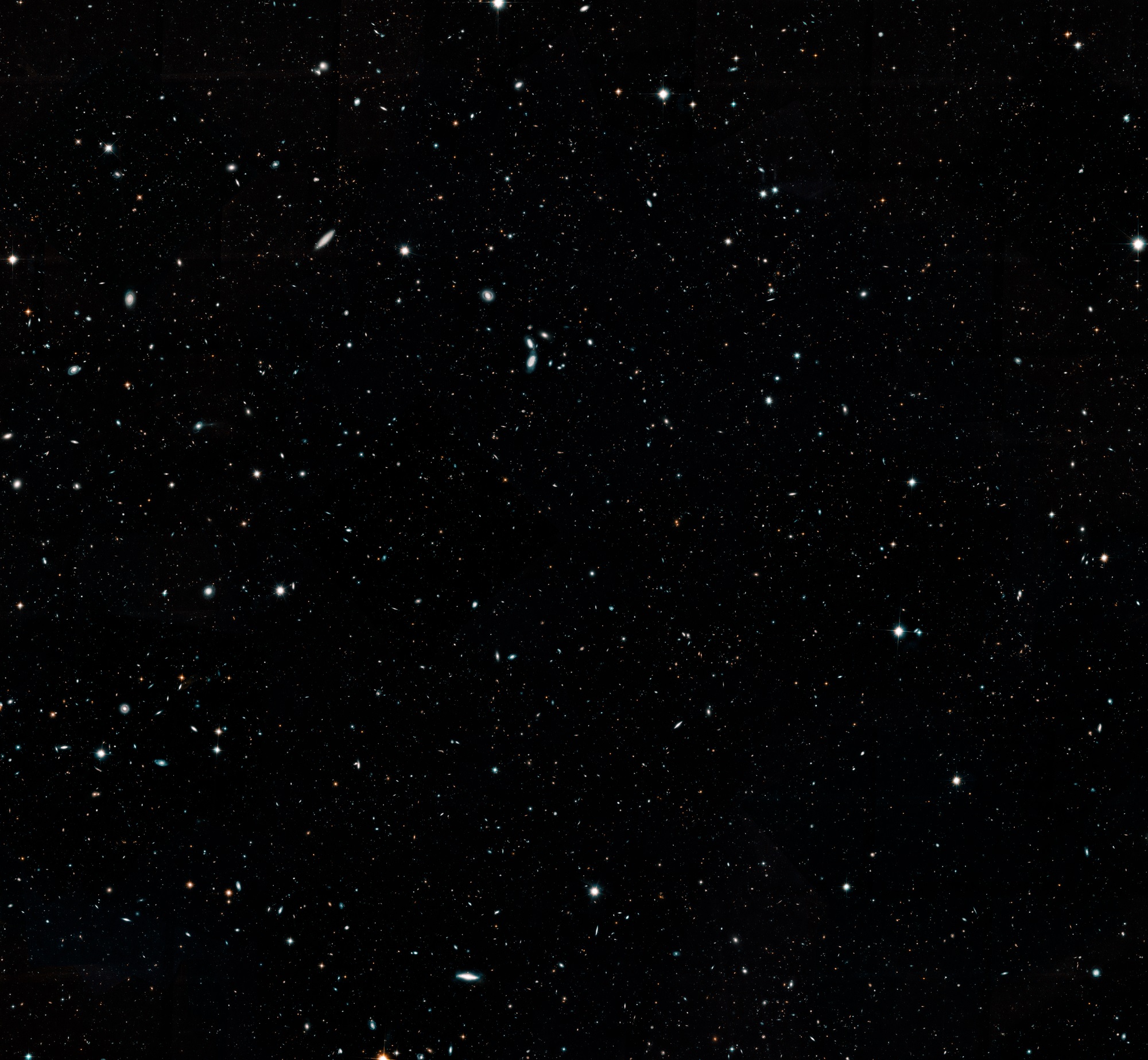This Epic Hubble Telescope Mosaic Is a Cosmic 'History Book' of Galaxies
Astronomers have assembled a mosaic of nearly 7,500 images taken of the distant universe, creating the largest and most comprehensive "history book" of galaxies ever made.
The mosaic, called the Hubble Legacy Field, combines observations from 16 years' worth of Hubble Space Telescope deep-field surveys, including the Extreme Deep Field survey, which offers the most far-reaching view of the universe, according to a statement from NASA.
"Now that we have gone wider than in previous surveys, we are harvesting many more distant galaxies in the largest such dataset ever produced by Hubble," Garth Illingworth, leader of the team that assembled the image and a researcher at the University of California, Santa Cruz, said in the statement. "This one image contains the full history of the growth of galaxies in the universe, from their time as 'infants' to when they grew into fully fledged 'adults.'"
Related: How Many Galaxies Are There?
The image contains 265,000 galaxies, covering more than 13.3 billion years of our universe's history. Some of the galaxies captured in the mosaic extend all the way back to just 500 million years after the Big Bang, when the universe was still young and planets were just beginning to form. Therefore, the new mosaic can be used to better understand the expansion of the universe, the astronomers said.
"Such exquisite high-resolution measurements of the numerous galaxies in this catalog enable a wide swath of extragalactic study," Katherine Whitaker, catalog lead researcher and a physicist at the University of Connecticut, said in the statement. "Often, these kinds of surveys have yielded unanticipated discoveries which have had the greatest impact on our understanding of galaxy evolution."
Capturing a wider view
The new mosaic captures roughly 30 times as many galaxies as any previous deep-field view and spans almost the width of the full moon, according to the NASA statement.
Breaking space news, the latest updates on rocket launches, skywatching events and more!
The mosaic includes Hubble images that range from ultraviolet to near-infrared light, offering a detailed view of various features of galaxy assembly over time. This includes remnants of galactic collisions or mergers. That information helps illustrate how galaxies change over time and build themselves up to become the giant galaxies seen in the nearby universe, according to another statement, this one from the Hubble Space Telescope.
"One exciting aspect of these new images is the large number of sensitive color channels now available to view distant galaxies, especially in the ultraviolet part of the spectrum," Rychard Bouwens, one of the mosaic team members from Leiden University in the Netherlands, said in the Hubble statement. "With images at so many frequencies, we can dissect the light from galaxies into the contributions from old and young stars, as well as active galactic nuclei," supermassive black holes releasing radiation at the centers of some galaxies.
Prior to the launch of the Hubble Space Telescope in 1990, astronomers were limited to observing galaxies at a maximum distance of about 7 billion light-years away, which shows objects only halfway back to the Big Bang, according to the statement.
Astronomers said that no other image will surpass the new portrait of the universe until future telescopes launch and look even deeper into the legacy field. Those instruments will include NASA's Wide Field Infrared Survey Telescope and James Webb Space Telescope.
The new view of the universe is available through the online database Mikulski Archive for Space Telescopes, which includes data from Hubble and other NASA missions.
- Cosmic 'Wild Ducks' Flock Together in Dazzling in Hubble Telescope Photo
- Hubble in Pictures: Astronomers' Top Picks (Photos)
- 15,000 Galaxies Shine in This 1 View from the Hubble Space Telescope
Follow Samantha Mathewson @Sam_Ashley13. Follow us on Twitter @Spacedotcom and on Facebook.

Samantha Mathewson joined Space.com as an intern in the summer of 2016. She received a B.A. in Journalism and Environmental Science at the University of New Haven, in Connecticut. Previously, her work has been published in Nature World News. When not writing or reading about science, Samantha enjoys traveling to new places and taking photos! You can follow her on Twitter @Sam_Ashley13.


